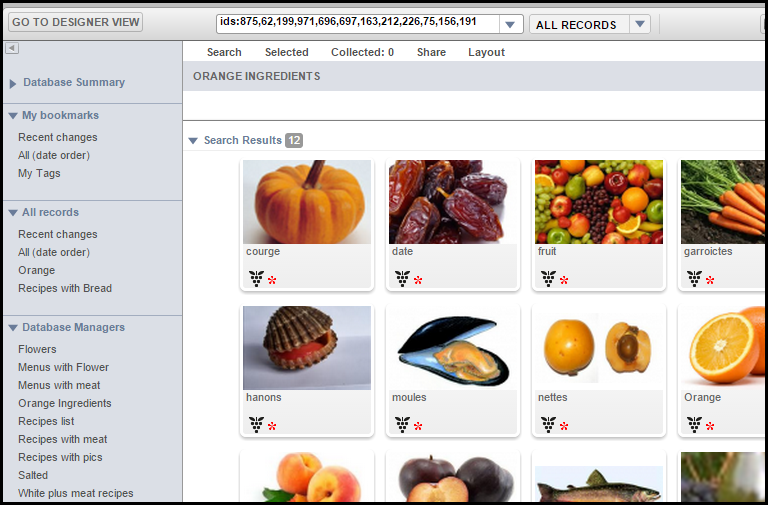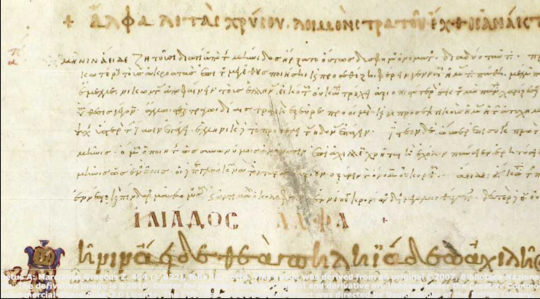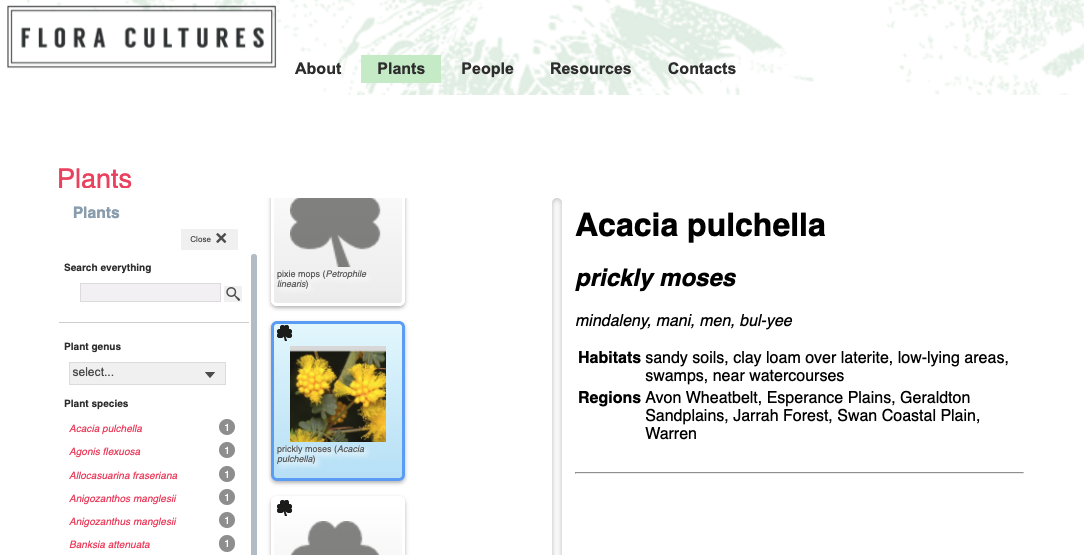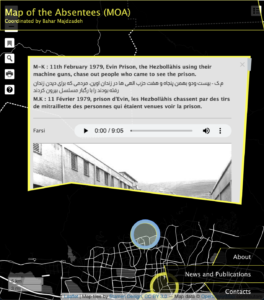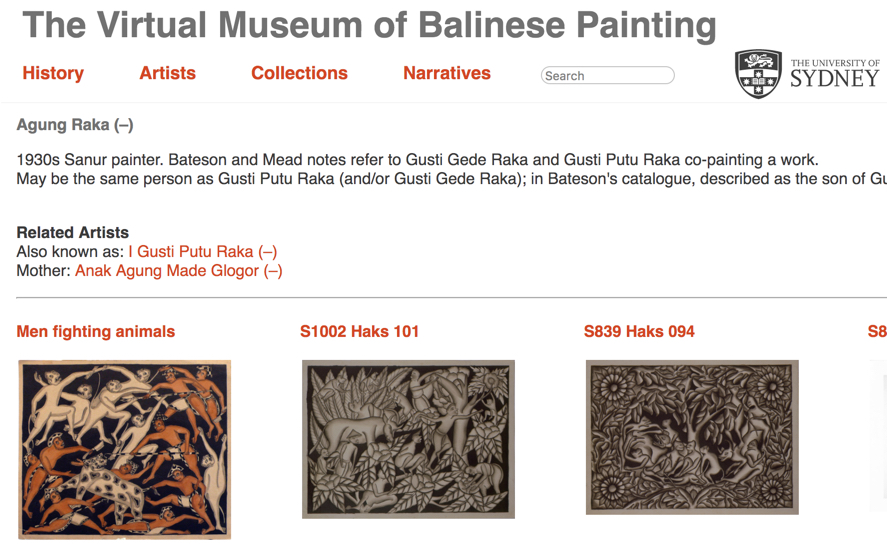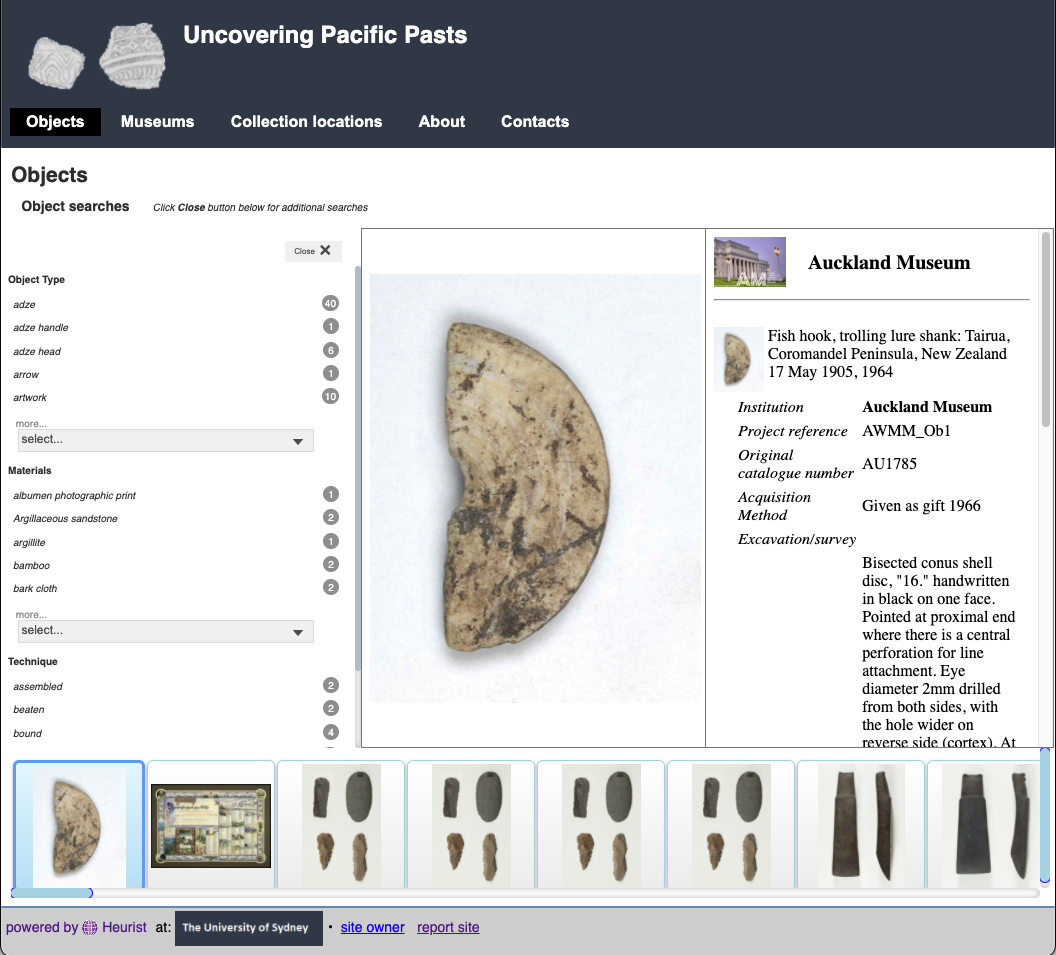Featured Projects
See how others use Heurist to power their research.
Create a Heurist database (free institutionally-supported services)
These free services are kindly supported by Intersect Australia, Huma-Num (France) and contributions from users.
There are more than 2000 databases on Heurist’s servers, used by all kinds of users, from students with small databases to support their Masters research, to large millions-of-dollars projects using Heurist to coordinate international teams of scholars. On this page, you can view some of these projects, and gain a sense of the great variety of different Heurist databases in operation around the world.
History ☟ Literature and Book History ☟ Biography and Prosopography ☟ Anthropology ☟ Art and Media ☟ Museums and Archives ☟ Research Infrastructure ☟To explore further, please visit our projects database, where you can search for projects recorded in our central catalogue and contact their creators to exchange ideas and expertise. We also have discussion groups for the different areas (linked below) and a general discussion forum (preferred languages: English, French, German and Spanish).
PLEASE NOTE : THE PROJECTS LIST IS VERY OUT OF DATE.
We are in the process ( May – July 2024) of preparing a new website and updating out reporting of projects as the current pages do not reflect very much of the website work we and others have done over the last three years using a new and much improved CMS editor built into Heurist since 2021. For examples of recent projects which reflect your project domain, please contact us directly (support@heuristnetwork.org).
History ↑
Digital Harlem
An award-winning component of the Black Metropolis-ARC: Harlem collaborative research project, whose goal is to “produce an ethnographic study of everyday life in Harlem as it became the black capital of the world.” Since 2013, the back-end Heurist database is accesible via the project’s public website, to provide a research tool that gives a customised view of activities, places, and relationships relating to Harlem from 1915-1930. more…
Stephen Robertson (George Mason University)
Grassroots Activism in Education
GAE is a website that highlights the work of ‘ Community organising in Australian education policy, 1970s-1980s ’, a three-year (2020-2023) research project investigating the phenomenon of ‘grassroots’ organising for education reform during a significant period in Australia’s history. The project is co-led by Professor Helen Proctor (University of Sydney), Associate Professor Jessica Gerrard (University of Melbourne) and Professor Susan Goodwin (University of Sydney) and funded by the Australian Research Council (DP 200102378).
The project has a strong visual identity, which structures their Heurist website. In the underlying Heurist database, the project are building an archive of documents, people and events that comprise the history of grassroots activism in Australian education. As the project proceeds, new modules will be added to their website.
Prof Helen Proctor, Prof Sue Goodwin, Dr Heather Weaver (University of Sydney), and Dr Jessica Gerrard (University of Melbourne)
Mapping the Suffrage Metropolis
This project explores how the women’s suffrage movement organised itself in New York City from 1870 to 1917, when women received the vote in New York State. The project team collected information about the suffragists and the events they organised, then plotted them on historical maps from the period. The entire database and website was designed without any direct help from the Heurist team. The project team made some clever design decisions—using saved filters, they created detailed maps for three particular years, 1870, 1890 and 1910. This make their site easy to navigate, and foregrounds the historical narrative they tell with their data: the spread of suffragist organising out of Manhatten and into the other boroughs of New York City as the Nineteenth Century drew to a close. They also make use of a faceted search to allow visitors to easily explore the data, and provide useful documentation on the website itself. This project is a prime example of how individual researchers can use Heurist to drive their research. Visit the website, or check out L.C.’s book.
Dr L.C. Santangelo, West Point Academy
Inventaris Daring Epigrafi Nusantara Kuna (IDENK) / Online Inventory of Ancient Nusantara Epigraphy
Nusantara is the Indonesian name for maritime South-East Asia. The area is rich in inscriptions in many languages, including Old Javanese, Old Malay, Sanskrit, Tamil and more mysterious tongues. This database collects information about hundreds of inscriptions, allowing users to search for inscriptions, browse them on a map, and access information about them in either English or Bhasa Indonesia. Visit the IDENK website.
Vincent Paillusson, Ecole française d’Extrême-Orient
Medieval Cookbook
A study into the history of alimentation practices during the medieval period. The searchable Heurist database links menus, recipes and ingredients. more…
Catalina Macias, EU Masters Thesis in Alimentation History (Columbia University)
Gallipoli The First Day
Winner of the inaugural AFI Award for Innovation in Screen Content 2009, Gallipoli is an interactive ABC 3D documentary website that provides an immersive experience of the ANZAC landing at Gallipoli, 25 April 1915. more…
Archaeological Computing Laboratory (USyd) / BC’s Digital Innovation Unit
Dictionary of Sydney
Born digital in Heurist, starting in 2007 and first published online in 2009, the Dictionary used Heurist as its back-end. Around 14,000 entities in a dozen entity types, 750 entries totalling around a million words, and 3,500 multimedia (2013 figures), are linked through 75,000 relationships, annotations and events. After more than a decade, the Dictionary of Sydney Trust was wound up in 2017 due to lack of funding, and the data was transferred to the State Library of NSW for long-term preservation; the website is still maintained but no significant further content generation is planned to the best of our knowledge. more…
DoS Trust, Sydney
Literature and Book History ↑
We have a user group for book historians in Heurist, where we discuss the pitfalls and the delights of turning the history of books into data.
Libraries, Reading Communities & Cultural Formation in the Eighteenth-Century Atlantic
This major book history project investigates what people were reading on both sides of the Atlantic Ocean in the Eighteenth Century. The team are collecting library borrowing records from dozens of libraries across Britain and the United States of America, allowing scholars connect and compare reading habits across the Anglophone Atlantic for the first time. The project is also technologically ambitious. It aims to be fully interoperable with other comparable book history databases, such as The French Book Trade in Enlightenment Europe: Mapping the Trade of the Société Typographique de Neuchâtel, Books and Borrowing 1750-1830: An Analysis of Scottish Borrowers’ Registers and City Readers. To achieve this aim, Heurist is working closely with the project team to develop metadata standards for book history databases, and to extend Heurist’s capacities in Linked Open Data. This will have major consequences for the study of book history, as scholars will be able to query a network of related databases simultaneoulsy, and explore the movements of books across the world in richer detail than ever before. Visit the project website.
Prof Mark Towsey, University of Liverpool; Prof Simon Burrows and A/Prof Rachel Hendery, Western Sydney University; Dr Matthew Sangster, University of Glasgow
FILITERATURE
This database is a first step in the mapping and centralization of spanish literature resources in and about the Philippines. It presents two different but related types of materials: (1) Literary works published in Spanish in the Philippines between 1872 (year of the Cavite mutiny) and 1973 (year in which Spanish was first eliminated from the Philippine Constitution). (2) Literary works published in the rest of the world in Spanish about the Philippines between 1872 and 1973. published site…
University of Antwerp.
(BOF Klein Project)
Homer in the Margins: The Art of Citation in the Ancient Literary Commentary
A database project using Heurist to assist researchers in their study of the use of scholia (commentaries) on ancient texts, and the use of Homeric citations within the 3rd century Greek literary culture. The database owner says: “In these ways the Heurist platform will serve—true to its etymology—as the discovery mechanism for the role of citation in the tradition of the ancient literary commentary.” more…
A/Prof. Joshua Smith (Johns Hopkins University)
Biography and Prosopography ↑
We have a user group for prosopographers and biographical researchers who use Heurist, where users support one another to get the most out of their prosopography databases.
The Modern China Biographical Database
The MCBD aims to collect biographical data on any individual active in China, both Chinese and non-Chinese, through systematic data mining in source books such as directories, biographical dictionaries, Who’s who’s, etc., in newspapers and periodicals, and in the academic literature.
Using Heurist, the project was able to approach the study of biography in a new way: all the people in the database are interconnected in a vast network of places and institutions. The project relied on Heurist from top to bottom, using a Heurist database for all data collection, and the Heurist CMS to build the public website. Visit the MCBD
Project Director: Christian Henriot (Aix-Marseille University)
Diplômés de la faculté de droit de Pont-à-Mousson (1583-1635)
La base de données « Diplômés de la faculté de droit de Pont-à-Mousson » enregistre l’ensemble des lauréats de la faculté de droit de l’université de Pont-à-Mousson entre 1583 et 1635, tels qu’ils apparaissent dans la matricule facultaire conservée sous la cote D1 aux archives départementales de Meurthe-et-Moselle. Elle comprend 477 individus ayant obtenu un total de 758 diplômes, de tous niveaux (baccalauréat, licence et doctorat) et de toutes les disciplines juridiques (droit civil, droit canon et diplômes utriusque juris).
The database “Faculty of Law Diplomas of Pont-à-Mousson” stores information about all the graduates of the Faulty of Law at Pout-à-Mousson Universitiy between 1583 and 1635, as they appear in the faculty’s matriculation lists conserved under the rating D1 at the departmental archives of Meurth-et-Moselle. It comprises 477 individuals who obtained a total of 758 diplomas, of all levels (bachelor’s, master’s and doctoral degrees), and of all juridical disciplines (civil law, canon law and utriusque juris [both civil and canon law]). Visit the project website.
Antoine Fersing, Université de Strasbourg
China-Australia Heritage Corridor
This project explores the heritage connections between Australia and Zhongshan Prefecture, Guangdong. Beginning in the mid-1800s, thousands of people (mostly male), migrated from the villages of Zhongshan to various locations in Australia. This project records the houses, schools, and ancestral halls built in their villages with money sent back from Australia and linking these to places in Australia which Zhongshan folk created, including houses, shops, and market gardens. These buildings, and the migration stories that bring them to life, illustrates the history of connectivity Australia has with southern China. Visit the Heurist website | Visit the project website.
Institute for Culture and Society, Western Sydney University
Mapping Island Lives
A Heurist project to collect prosopographical information on persons who lived in the nineteenth and the early twentieth centuries, born in or originating from the Ionian Islands and to document, in a dynamic way, the course of the political, social and cultural history of the region. more…
Prof. Helen Katsiadakis (Academy of Athens)
Beyond 1914—The University of Sydney and the Great War
Website launched in September 2014 to provide an extensive, searchable Heurist-based database tracking the education and military service of approximately 2,500 staff and students of the University of Sydney involved in the First World War. More information…
Beyond 1914 was so successful that it later morphed into a national project, Expert Nation, which studied the wartime service records of students from many of Australia’s Universities. All these different projects were powered by the single database developed for Beyond 1914. By using Heurist’s built-in filtering tool, it was possible segment this single database and display the records for each individual University seperately. Check out the public websites for the University of Tasmania and the University of Adelaide‘s contributions to Expert Nation.Julia Horne, Nyree Morrison (USyd)
Expert Nation
An ARC funded Discovery project, Expert Nation builds on the success of Beyond 1914 to investigate how Australian university graduates, with World War One experience, contributed to the formation of the post-war Australian nation. more…
Dr Tamson Pietsch (UTS), A/Prof. Julia Horne, Prof. Stephen Garton (USyd),
Prof. Kate Darian Smith, Dr James Waghorne (UMelb)
The University of Tasmania and World War One
The University of Tasmania and World War One page is a searchable database of biographies and archival records about members of the The University of Tasmania community involved in the First World War and was developed in partnership with Expert Nation. It presents the stories of the 125 graduates, students and University Councillors who had served before, during and after the war and whose names appear on Nora Payne’s carved Honour Board. published site…
The University of Tasmania
First Generations | Students at the University of Sydney, 1850-1918
The First Generations database is a collection of biographical material on 805 students that attended the University of Sydney between 1850-1914. Learn about where these students came from, what they studied, and how the university shaped their lives. The individuals featured in the database all matriculated at The University of Sydney and many went on to graduate with a degree. Some students, who otherwise would not have had the money to attend university, were given the chance thanks to winning a scholarship. The database allows visitors to study many aspects of these students lives both within and beyond the University. Visit the website.
Profs Julia Horne and Geoffrey Sherington, University of Sydney
November 1918 – Emerging from the Great War
November 1918 — Emerging from the Great War is a searchable database of biographies and archival records about members of the University of Adelaide community involved in the First World War and was developed in partnership with Expert Nation. Built on the legacy of information provided to the University between 1916 and 1935, November 1918 presents the stories of former staff, students and graduates before, during and after the war. published site…
The University of Adelaide
Anthropology ↑
Mongolie (Techniques du corps) / Mongolia (Techniques of the Body)
This database grew from Prof Lacaze’s PhD fieldwork in Mongolia. The database catalogues techniques of the body in modern Mongolia. How do people use their bodes in Mongolia? What are the characterstic gestures of people across the steppes? The database comprises 500 photos documenting the body language of people in Mongolia today. The photos have been thorughly catalogued by Prof Lacaze, presenting a systematic overview of bodily expression in a vast part of the world that is often little understood by outsiders.
Prof Gaëlle Lacaze, Université de Strasbourg
Flora Cultures
Flora Cultures investigates the botanical heritage of Western Australia. In its first phase, it focussed on 48 plant species found in the bushland of Kings Park and Botanic Gardens in Perth. Each species was entered in the database, with rich information about its cultural and biological features. Indigenous names for the species, its preferred regions and habits, sources of information about the species, and people associated with the species were all recorded in the database, enabling visitors to explore the Western Australian environment in a uniquely rich way. Like many other Heurist sites, the Flora Cultures site uses Heurist’s ‘faceted search’ feature to provide an intuitive interface on the public website. Visitors can easily search and filter the data, and call up information about any of the plants, people or academic resources recorded in the database. Visit the Flora Cultures website.
Dr John Ryan, Edith Cowan University
Art and Media ↑
Map of the Absentees | نقشه غائبین | La carte des absent.e.s
Map of the Absentees is an artwork by Bahar Majdzadeh, which documents the plight of refugess from the Iranian Revolution. The participants of the Map of the Absentees are among these militants who were able to escape arrests, fleeing these morbid streets for remote destinations in order to stay alive, in the hope of continuing the struggle, or to come back one day, but who, until today, have not returned. Scattered all around the world, nineteen political Iranian refugees whose exile originated in the political destruction that occurred in Iran between 1979 and 1988 have participated in the creation of this map. These are people who see exile as a political stand, as the continuation of a struggle, as resistance, symbolic as it may be. Each voice tells a memory, a thought, an analysis or an event linked to a specific place in Tehran. These voices that do not allow for building a historical and detailed story, try to establish, through the actual map of Tehran, a dialectical relation between the past and the present. This map, admittedly incomplete, tries to offer the possibility of confronting the « Other » with the history of the Revolution, but also with an amputated and exiled memory, likely to rekindle a lost political alterity. This cartography, by trying to draw the traces of the absentees of the city, questions the neutrality which it claims to possess with regard to the political disasters. The Map of the Absentees, which is an open project, can be comprehended as a small act of resistance in the face of the map’s authoritarian power. It is the transposition of a sound cartographic installation by Bahar Majdzadeh.
The map is built on a Heurist database, which hosts the participants’ interviews and provides the mapping and audio streaming services. The site was built in Heurist’s Content Management system, using a custom design provided by Bahar.
The website is due to be made public in June 2022
Bahar Majdzadeh (Aix-Marseilles Université)
The Virtual Museum of Balinese Painting
A comprehensive online database of Balinese paintings, documenting public and private collections held in different parts of the world. The site generates ‘live’ data based on Heurist custom reports. more…
Adrian Vickers (USyd)
MIMC: Mapping the Independent Media Community
The MIMC Project tracks the use of 16mm film and video technology across the United States of America during the 1960s and 70s, when the availability and affordability of 16mm technology enabled amateur, independent and underground filmmakers to pop up all over the country. The key data source for the project is the archive of the Department of Film and Video, which includes the Film and Video Makers Travel Sheet, a monthly publication that aimed to “encourage and facilitate wider use of exhibition and lecture tours by film and video makers.” The Travel Sheet served as a social networking tool connecting media artists and the organizations willing to support their work by listing of artist’s tour dates and locations, contact information for organizations, advertisements for new works in film and video, and announcements of interest (festivals, conferences, funding information, and employment opportunities). The MIMC project has transformed the Film and Video Makers Travel Sheet from a static resource into a relational database using Heurist. The MIMC database currently contains the data from the Travel Sheet issues published between 1973-1977 and the 1975 Film and Video Makers Travel Sheet Supplement that included all of the individuals and organizations from the Travel Sheet mailing list. The database includes records for over 2400 individuals, 1500 organizations, and 1200 film and video works with additional records added each day. The MIMC website is a great example of how flexibly Heurist databases can be used. The project has its own website, which provides access to the database through a facetted search embedded on the database page. Visit the project website.
Dr Lindsay Mattock, University of Iowa
Gamesound
GameSound is a prototype database that reveals the music and sound effects present within video games in an effort to facilitate academic study. Using an interdisciplinary approach for categorization and display, GameSound allows online access to a meaningful dataset of technical and musicological data using dynamic search capabilities. Our goal is to develop GameSound into an indispensable resource for game scholars, ludomusicologists, and independent researchers. published site…
Melissa Mony, Michael Iantorno (Technoculture, Art and Games Research Centre)
Museums and Archives ↑
We have a user group for librarians, archivists and other data specialists who use Heurist in their research, or to provide infrastructure for their institutions.
Uncovering Pacific Pasts
This project explores how objects in museums have been interpreted and reinterpreted over time. Though objects in museums seem to be static and unchanging, their meanings shift considerably as the world around them alters. The project used Heurist to create an online exhibition of selected objects from the project’s research. This project particularly displays the power of Heurist to do something substantial very quickly. Prior to using Heurist, the project team had collected information about objects in a spreadsheet, but had no way to exhibit this information effectively. In just four days, we designed a new Heurist database, imported the spreadsheet into it, and put together an interactive online exhibition using Heurist’s in-built website builder. As a result, the project team were able to exhibit their research to a wide audience through an interactive portal, which includes maps, faceted searches and an attractive menu to browse information about the collaborating museums. Visit the website.
Professor Matthew Spriggs, Australian National University
Wayarti Database
Wagnka Maya Pilbara Aboriginal Language Centre is a leading Aboriginal language and resource centre in Australia. It focusses especially on the peoples and languages of the Pilbara region in the north of Western Australia.
The Wayarti Database contains thousands of linguistic, historical, and cultural records that have been stored at Wangka Maya for over 30 years. Searching the database will not currently provide access to a given document, but will provide the user with the location to the item in the Wangka Maya archive or on the Wangka Maya server.
Heurist provides both the database and the website for this important project. Visit the website.
Based at Wagnka Maya Pilbara Aboriginal Language Centre
Theodore Roosevelt (TR) Digital Library
This project provides a growing database (built with Heurist) of the people who have created and received material in the Theodore Roosevelt (TR) Digital Library and those mentioned within that material. The site provides a resource for interns that enables searching for the creators, recipients, and people referenced in the TR Digital Library material. published site…
TEMPORARILY UNAVAILABLE DUE TO USYD SERVER ISSUE
Theodore Roosevelt (TR) Digital Library
Research Infrastructure ↑
We have a user group for librarians, archivists and other data specialists who use Heurist in their research, or to provide infrastructure for their institutions.
Centre for Sustainable Research Data Management
The University of Hamburg’s Centre for Sustainable Research Data Management has adopted Heurist as a central component of their research infrastructure. They have installed their own copy of Heurist on the University’s servers, and provide training and support to academics and students from the University to use Heurist in the best possible manner. Dr Hagen Peukert administers Hamburg’s Heurist instance, and is also a key member of Heurist’s Technical Steering Group, helping to ensure that Heurist continues to meet the needs of information scientists and academics alike into the future. more…
Dr Hagen Peukert, Senior Research Scientist, University of Hamburg
ΑΝΑΒΑΘΜΙΣ
The project ANAVATHΜIS of the Institute of Historical Research of the National Hellenic Research Foundation has been implemented with funds by Greece’s Operational Program “Competitiveness, Entrepreneurship & Innovation” (EPAnEK) 2014-2020 and the contribution of a large number of both pre- and post-doctoral junior researchers. The project’s outputs are presented with open-access, mainly to the research and education communities. A key strand of the project was to convert approximately 30 existing databases to Heurist, to ensure long-term sustainability and to enable all the databases to be managed using a single platform. The team run a local installation of Heurist on their own servers, and many of the databases can be accessed from the ANAVATHMIS homepage.
ANAVATHMIS team, National Hellenic Research Foundation
Paris Time Machine
The Paris Time Machine is a French project that aims to bring scholars from different disciplines together using geospatial tools. A map can be a mediator. Different scholars from different disciplines can use a map as a common workspace for their different approaches. The different organisations that have formed the Paris Time Machine share a common goal: to reconsitute the cultural systems of the past from the traces that remain. Heurist is a key tool in the Time Machine’s arsenal. With its in-built mapping and dating functions, Heurist is an ideal platform for creating the shared geospatial workspace the Time Machine envisions. Read more about how the Paris Time Machine uses Heurist.
FAIMS
The FAIMS (Field Acquired Information Management Systems) project (launched June 2012) builds tools for digital data collection in the field, and online processing and archiving of the resulting data. Project staff also advise researchers concerning the development of data management strategies that meet the requirements of major grant schemes and improve research outcomes. Heurist plays a central role in the FAIMS workflow, allowing field data to be collected across multiple tablets and synchronised with a Heurist-database for further manipulation, analysis and export. more…
The Time-Layered Cultural Map
TLCMap is a set of tools that work together for mapping Australian history and culture. It was initially funded by an Australian Research Council ‘LIEF’ grant, to rapidly develop infrastructure for geospatial research in Humanities disciplines in Australia. The project collected a range of existing tools, developing workflows and additional pieces of software that would enable scholars to combine different tools into a coherent research workbench. Heurist plays two roles in TLCMap. It form the basis for TLCMap’s MapFinder tool, which scholars can use to publish geospatial datasets in a standardised, reuseable format. Heurist is also a key component of TLCMap’s ecosystem of tools.
TLC Map team, University of Newcastle





